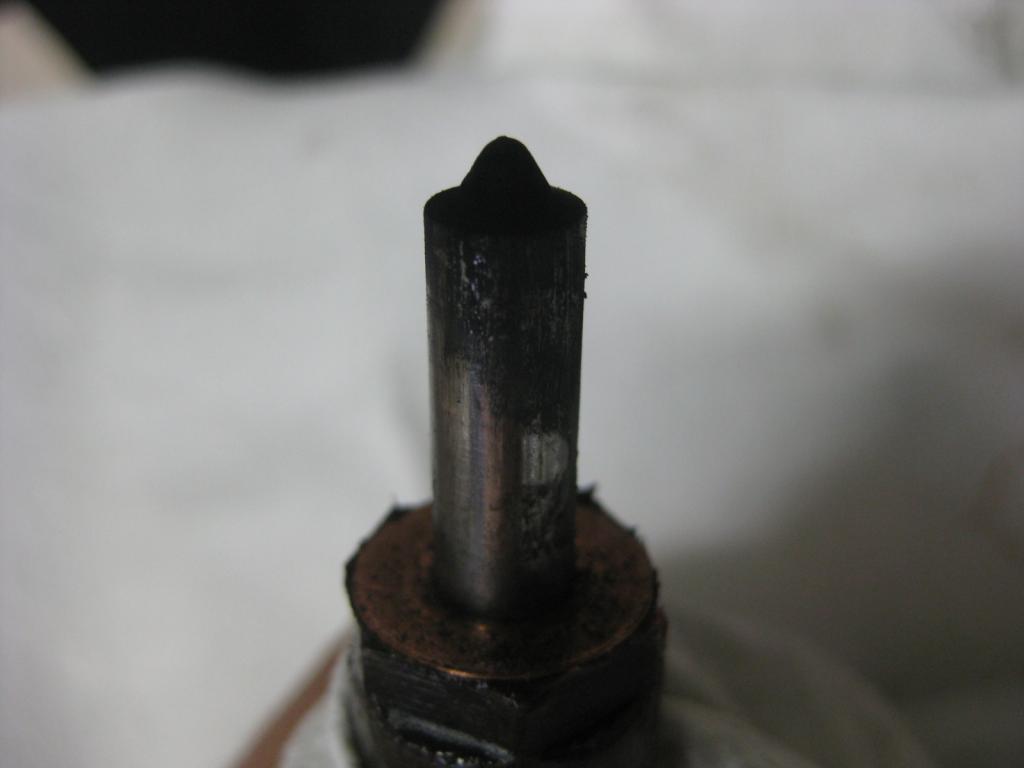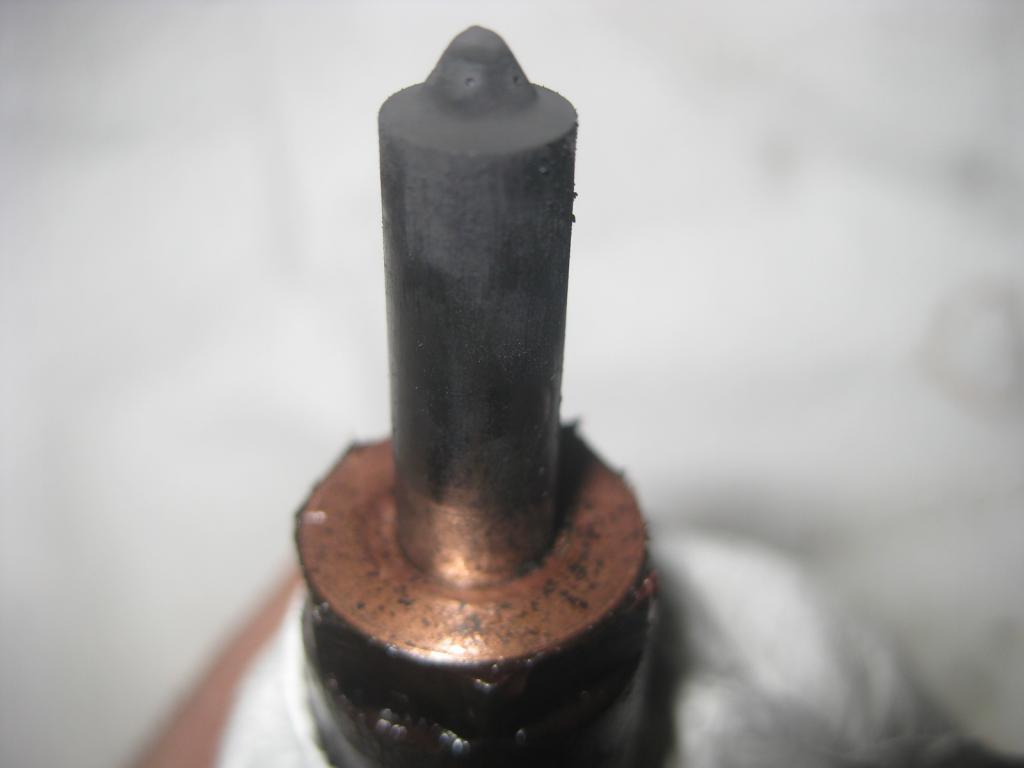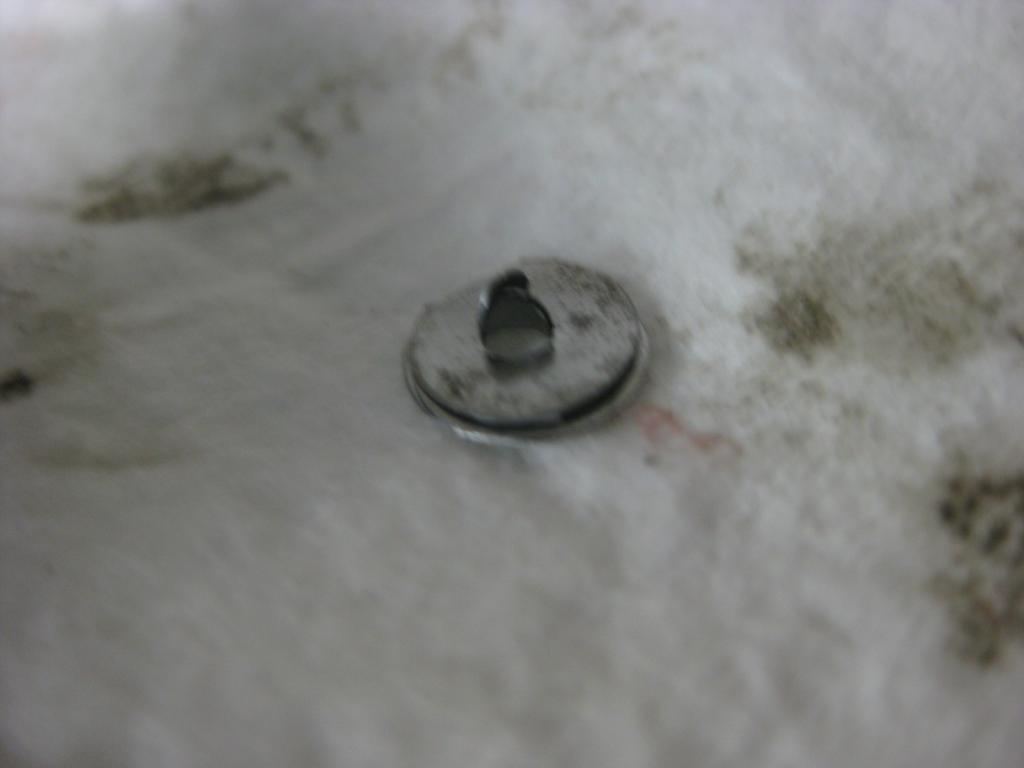Everything posted by ISX
-
A little package came...
But what buildup is there to burn off? Of all the times of taking out my injectors, they always look the same with just a light coating of carbon.
-
A little package came...
I'll take the injectors out of my ford engine that will never see fuel again and I'll put an oxy/acetylene torch to it and figure this out once and for all. If anything is caked with carbon it has to be that thing.
-
STILL battling fuel gremlins
I just took the lift pump completely apart, even the main pumping side of it. It's very interesting and I got video and stuff I'll have to show you. Basically the fuel will NOT backflow through the lift pump. I think my problem is that on an uphill (only time it happens) the air is allowed into the return lines (fuel leaks out) and when you start it (always starts fine) it eventually sucks the air into the fuel filter (if you trace the injector returns they go to the fuel filter, not to the fuel tank, so any air goes right to the filter then injection pump then chug chug chug) causing all the chugging until it purges it. The return lines are pressurized so fuel leaks out while running so it doesn't really let air in until I turn it off and park uphill. On a downhill the fuel in the return line "rail" may dry up but only until it makes the bend to the fuel filter and since that is higher than it, it cannot let fuel continue to replace fuel with air. Check valves would all solve this if they made them for banjo bolts. I think a way to test would be to just take the return line rubber hose off and put your own rubber hose on it and supply 40psi and just start spraying soap on all the fittings. Only problem is that it goes straight to the overflow and it would just keep the thing shut since it is pushing the ball in there shut. I do have a crappy overflow with no balls though so I would stick that in for testing purposes, though the overflow itself could be a possible leak as well. Actualllllllly, I got it. This is really NASA engineered lol. There are 2 fuel inlet ports on the P7100, one of which is unused and is on the front of the pump behind the timing cover. If you put an elbow in there with a simple barb fitting or even get fancy and put an air hose for an air compressor fitting in there so you could just unhook it when your done but hook the air hose to it and set the regulator on the compressor for 40psi. The overflow on the truck is once again a problem so you would take the rubber line off the steel line that goes to the overflow and use your own rubber hose that goes to a 50psi blow off valve (just in case, high pressure can crack the fuel filter housing, though I think it might even take more than 50) so the overflow could open but would just go to your blow off valve so the entire system would be pressurized. This would only get to the lift pump and not the fuel heater which is another common air leak but you can actually use a clear rubber hose between the fuel heater and the lift pump (replacing that 3" little piece of crap) and then you could watch the air bubbles. I'll put this contraption together tomorrow and see what I can see. Hope diesel doesn't eat those air line connector o rings.
-
STILL battling fuel gremlins
If it runs fine after that initial stutter then I wouldn't replace anything. The mirror deal would work. I really think it must be nothing since it runs fine and am betting on the things I said in my last post. If you don't find anything there then I would hook everything back up and drive it. I am going to do some advanced NASA engineering and figure out how to find these air leaks. I seem to have several but I notice my return lines are leaking so I guess I need to tighten them more. Copper takes some finess to get it to seal right. The lift pump probably seals the same as a 1st gen lift pump so I wouldn't see any reason why the chevy gasket thing wouldn't work. Don't worry about it breaking on your or anything, the filter did it's job and stopped the metal shavings from wherever they came from and the lift pump is obviously still pumping so I wouldn't break a sweat. When I got my truck I didn't know a thing about it and the next day it wouldn't start. I had no clue what to do but read and read and figured out what the fuel shutoff solenoid was and found the wire going to the battery was corroded and just happened to fall off the terminal completely the day after I bought it. Then the whole truck just started to fascinate me. I have taken the engine out for basically no reason, same with the trans and just about every part on the engine I have taken off for no reason, just to learn about it. You have the same truck and if you ever tinker with it like I did you will figure out that there is basically nothing that will go wrong with it. As long as it has oil and it starts in the morning, your pretty well guaranteed it will work until you turn it back off. These little air leak gremlins are the only things that get you and they are just a sign of age or working on it too much. I really enjoy any issue my truck has. Its a chance to take stuff apart and learn about it and why whatever failed failed.
-
STILL battling fuel gremlins
Everything looked good there. That primer boot is just for show, you can actually it right off and see the white thing under it. There is an o-ring around that white thing that sometimes gets worn out and lets air in. That fuel heater can be taken apart further but having no moving parts it probably isn't going to be shedding metal shavings lol. I would check out the fuel filter housing underneath part for any signs. Other than that you can't really do anything else. Not sure how they got in there. I'm just going to guess that sometime during it's life someone stripped some threads between the lift pump and the fuel filter and left shavings behind I would also venture to say they added something to the fuel tank at one time to do the oil on the fuel filter. Have you changed the oil in it yet and if so was the oil all the regular black crap with nothing else in it? See if the fuel is perfectly green when you take the fuel filter off to check out the housing, as in no oil in it. I want to check out some things myself so I am gonna go out and take my lift pump/fuel filter housing off as well right now.
-
A little package came...
I haven't been able to figure that one out either. My injectors always look the same and 99% of the time I do not get above 800F. I haven't been able to figure out what exactly gets built up on the injectors that is supposed to be burnt off (as in more than the usual light coating of carbon). Mine looked the same when I pulled them after they had at least 150,000 miles on them as they did when after pulling them 5000 miles from the last cleaning. If I see an injector that is caked with carbon, put back in the truck, pull a trailer uphill for a mile at 1300F, then pull the injector and it is spotless, then I will believe it. But I have absolutely no proof that it does a thing. Apparently carbon turns into a gas at 6500F, much like dry ice. It has no liquid form. However, if carbon is a great insulator, then it isn't going to take on the heat too easily. Another thing is if it does take on that kind of heat, then the aluminum piston within the same chamber would be nonexistent a second before the carbon burned off. Also, steel melts at 2400F or so, so the valves and everything else would also be melted. In the end, the engine would be a molten pool and the carbon would still be there. I have heard that water injection cleans everything up being that steam has that kind of cavitating cleaning effect or something. Why else would they have "steam cleaners". If there is something I am missing, please explain!
-
Timing Effects
So the OEM injectors are too small. Actually it's kinda interesting. I don't know how big the 24V injector is but I would assume mine would be smaller. I get great mileage so it's weird how you guys going to a bigger injector get better mileage when the OEM was already bigger than mine to begin with. It's things like that that drive me nuts. I know the engines are slightly different but stuff just never adds up and unless we buy a million dollar machine to see exactly what happens then I will never be satisfied We can assume stuff all day though the clues might get us closer to the real truth. I just wish there were more clues, but I am getting sooo close to finding the truth to it all.
-
Timing Effects
Ah so it is possible. Probably hard to ever get to that breaking point. I think there is a fine line between optimum duration and optimum atomization. If you get a big injector, the duration will be short but the atomization won't be as good. Get a small injector and the atomization is good but the duration is long. Everyone seems to gain mileage with those RV275's so I am betting the duration was too long on the smaller injectors.
-
Timing Effects
That makes me wonder if there is a point where you can put too much fuel to it. If I do enough rack mods to get full rack travel and I get the fuel pressure to run at 50psi, is it possible that when I am WOT that it would try to shove so much fuel out of the stock injector, that the pressure rise would get to the point that the injector cracks or the injector lines burst? Seems possible. I have another thing to start a thread on that has to do with duration that will be very intersting to discuss.
-
STILL battling fuel gremlins
Yeah that's just purging air, mine does the same thing. Park it downhill and it won't do it. Actually mine almost dies so I gotta get to the road before it hits the air bubble so that the truck moving can drive the engine/lift pump when it starts to die. I hold it to the floor as it's chugging and coughing and the rolling truck being left in gear keeps the engine going so it keeps everything pumping until it gets the air out. I'm wondering if a check valve in the return line right at the back of the engine where it goes to a rubber line would fix this cause everything on the engine is new now. Maybe a check valve on the incoming fuel as well. Anyhow I think you might have 2 different issues so I would do what I said and check everything out. If everything is good then what more can you do other than find that air leak.
-
STILL battling fuel gremlins
They get black over time but that's because they get dirty from whatever is in the diesel fuel. Contaminants and things. NOT oil. Your fuel filter looks the same as mine exept the plastic is not coated in the black film as well and I cannot get oil on my fingers like you did and that is what concerns me. It is oil and not fuel contaminants. If he ran trans fluid in it as an additive or any other kind of oily thing then that might have done it as well. But the metal shavings is really a big concern to me. I forgot to mention you will probably have to take the fuel filter housing off as well (verrry easy) and then you can inspect the bottom of it as well (take the fuel filter off and look). If everything looks fine then the shavings might have been just from him crossthreading the banjo bolt in the housing and shearing some threads and the oil could be a time he forgot about when he added something thick like that. I mean if it all looks perfectly fine then what is there to fix. The air leak isn't really cause for concern too much if everything looks good when you inspect it. Mine chugs when I park it uphill and let it sit, even after replacing every return line copper washer and all the banjo bolt seals. I haven't touched anything behind the engine though so it could be something farther back. It's just one of those things that you can chase your tail forever on.
-
STILL battling fuel gremlins
Maybe. Sometimes the air leaks are a pain to find. It's just really weird that you have oil in the fuel filter. The lift pump really wouldn't be able to ingest oil and be able to pump fuel unless it had some sort of weird crack in the plunger. When you take the lift pump out, you can pull the plunger that rides the cam right out. I usually put a light coating of grease on mine and it seems to help it be quiet, though I think it just gets washed off but you will see what I'm talking about. Actually heres a vid I made a while back.
-
STILL battling fuel gremlins
Not good. I would take the whole lift pump off and inspect it, only 2 bolts. They are a PITA 2 bolts well the center one is but easy enough. The problem I see is that there is nothing in the prefilter but there are metal shavings in the fuel filter and the only thing between the 2 is the fuel filter housing itself and the lift pump so one of those has to have shed the metal shavings and might be the culprit to where the oil is coming from since the lift pump is in direct contact with oil slinging around. It would be hard pressed to say it is sucking in oil but who knows, I would take it off and inspect it though. The fuel heater/prefilter comes apart moreso as well, you will see when you take the lift pump off since they are kinda attached to each other so you will be taking both out.
-
STILL battling fuel gremlins
If it didn't have WMO run through it then thats not good since it probably means something is broken or cracked. I have some ideas but yes you can just take the screen off since it just unscrews and see if you have any metal in there or see if it is broken. That will give us some more clues.
-
STILL battling fuel gremlins
You seem unsure of when it was changed last so I am guessing you just got the truck. The previous owner could have been running waste motor oil (WMO) or something. If the screen in the prefilter is cracked (like mine) then the metal shards could get through and end up in the fuel filter. If he was running WMO, then shards are not exactly rare when people drain their oil. That would explain everything. If the prefilter isn't cracked then shards that big wouldn't be able to pass through the prefilter so that would mean the shards are coming from the fuel filter housing, prefilter assembly, or the lift pump. If it were me, I would clean the fuel tank (if you didn't already when you messed with the pickup tube) and change the fuel filter (think you just did) and inspect the lift pump/prefilter assembly. Then I would see how it runs.
-
A little package came...
I meant you can't just hook the lines up and crank until it goes, I knew flooring it did nothing. I think it works on the CR trucks, just cranking and it fires.. As for the soot on the injectors, thats completely normal. In fact, they would look the same 10 miles later after you clean them.. It is just carbon build up. It builds as a dusting and then gets coked on over time. I don't know if you can just look at them and tell if they are blocked, you would have to pop test them to really tell. You can still see some shin on the nozzles so it's not like the carbon is coked on there. They look very normal to me. I think John's truck's crossover tubes looked the same. I know they had the brown coking from fuel leaking on them. I have no idea how they seal either, would think you could get a better seal by lapping them somehow.
-
A little package came...
These things can be finicky sometimes. I usually never crack the lines on mine, just floor it and it blows the air out eventually (don't think this works for a 24V). However, last week I had all the lines off and the injectors apart and I put it all back together and did the same tactic but this time I had a slightly rough idle. I went out and cracked line #1 at the injection pump and there was no change. I said hmm and cracked #1 at the injector until it started leaking fuel, tightened it back up and all was well. So sometimes they just get the right air bubble in there that wreaks havoc, I had never had to do that before.
-
Finally got it all on tape
Took my parents to chadwick with me since they had no clue what I did there. Got my dad to do some recording and he happened to catch this I had some doubts about that ledge hitting my back tire but I wanted to make sure
-
Diesel and an HHO system
And what MPG gain do you get at that rate?
-
Diesel and an HHO system
I don't really talk much in this world but I think a lot and on here I can gather my thoughts and write how I think. I never know what's gonna come out of my mouth Let me PM stodg73 and find out how much propane he uses to get a 5mpg increase. That will give us a rough estimate and I can account for hydrogen having 61000BTU and propane having 91600BTU. I just want to see if you need a LOT of gas or if the small amount they produce would actually benefit.
-
Rough Running
pics of one of the injectors I took out. Thats what 5 minutes of running looks like. Basically the same as after they've been in for 5 years, oddly enough. Difference is that all wipes off and its back to how I polished it looking, driving it and getting heat cycles into it cooks it on there. One where it just blew through, actually was like that on two injectors. That's all 3, blew them all. 2 injectors had no marks on the shims whatsoever
-
Rough Running
Post #4. http://forum.mopar1973man.com/threads/5365-injector-shims Not sure how it worked for him. I got through a few more where it did blow a hole in all 3 shims. Runs perfect now.
-
Rough Running
Alright I got shims from work using their punch die set thing and did some other things like put in new copper washers and banjo bolt washers on everything. Upped the pop pressure from 220 to 280 (stock is 260). Well now it runs like crap. It just sits there and chugs. I have good fuel pressure and no fuel leaks. So the real question is, do I actually need holes in those shims? I'm thinking the fuel is getting past the edges of the shims and allowing it to run, barely, but don't know if it works like that or not. --- Update to the previous post... A video to entertain the masses. Think I might go ahead and take the shims out and see what happens. I didn't touch the injection pump so it couldn't be the culprit. http-~~-//www.youtube.com/watch?v=pB6EqzZq6tA --- Update to the previous post... Well I got impatient and just took them back apart. I need this truck in the morning. Anyhow, the myth has been busted. The return goes up through the center straight through the spring and everything. The OEM shim was facing the nozzle and the other shims were on top of it so you can see the intense pressure trying to push it's way out of the injector return line. Little more and it woulda put the holes in the shims for me lol. So why did it run rough! Return lines relieve excess fuel that is under pop pressure, so what exactly does that mean? What exactly is it's purpose..
-
Diesel and an HHO system
I think there is something missing in all of those. The alternator is efficient at producing power. The engine is not. Adding HHO makes it more efficient. There is a difference between getting power from nothing and getting more power from the source of energy. Right now we have 60% of energy from the fuel just being thrown out the window. I believe something that makes it more efficient can have a positive outcome on mileage, even with a power loss from making the HHO. The gain from it is more than the power loss.. BTW, 45 amps x 12 volts is only 540 watts, that equates to 1842 BTU out of the 135,000 in diesel. So considering a 40% efficient vehicle, that means only 54,000 BTU is turned into usable energy. If you make it just 1% more efficient, it now turns 55,350 BTU into usable energy, or 1350 more. Obviously that's a net loss of 492 BTU in the system, however, hydrogen is also a fuel. So not only is it a catalyst to helping the diesel burn better, it is also an energy source, so MPG will go up. Of course this assumes there is enough hydrogen to do anything. I'd like to see how much propane stodg uses to get a couple mpg gain.
-
Diesel and an HHO system
I actually used to make the stainless steel HHO generators for a company when this was relatively new. You would cut a 20ft pipe into 6" lengths and I had to face them all off in the lathe until they were perfectly 6". Eventually they were bringing in several pipes a week so we pawned the job off. They claimed a couple mpg difference but that's from them so who knows. I haven't seen enough input from people to say it works or doesn't work. You can make it yourself very cheaply.






